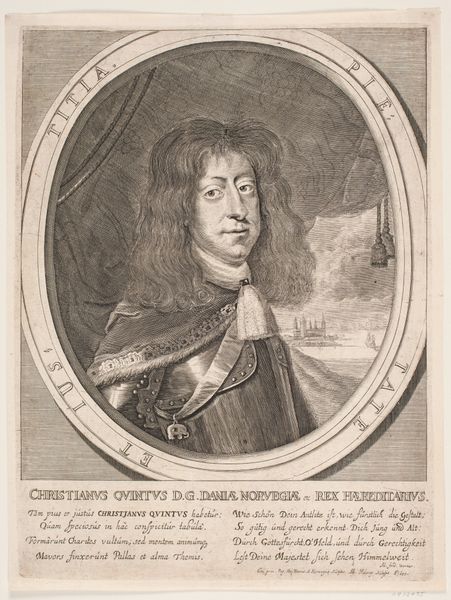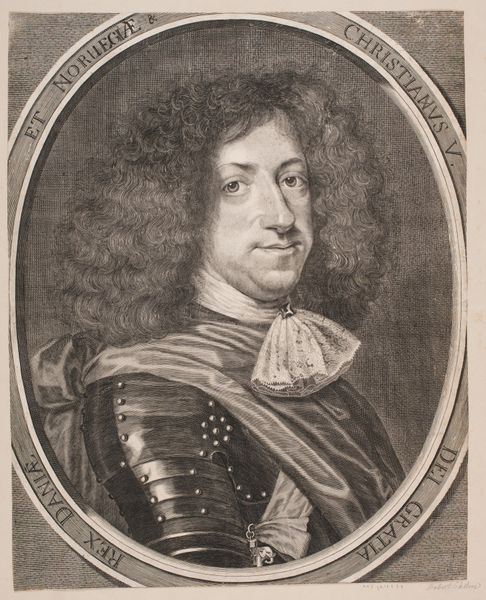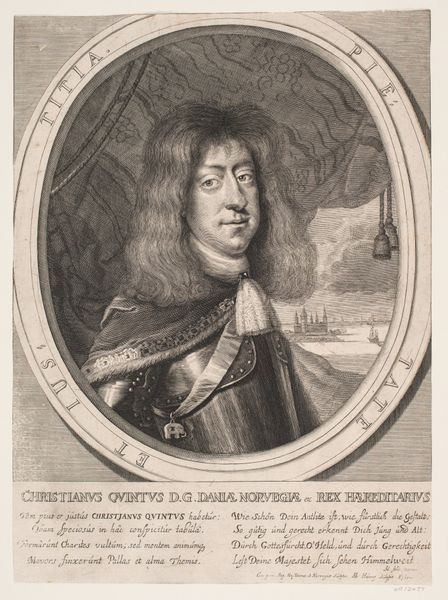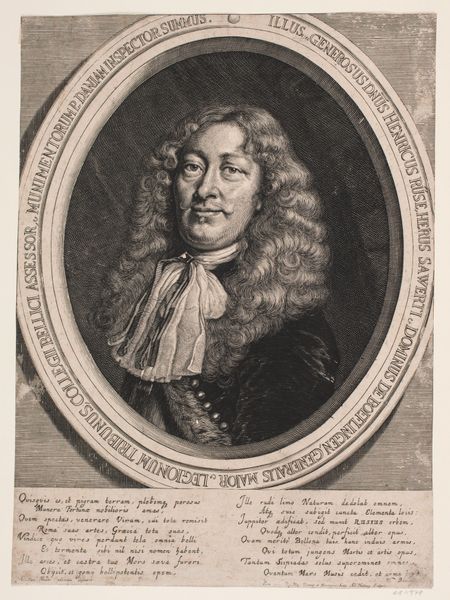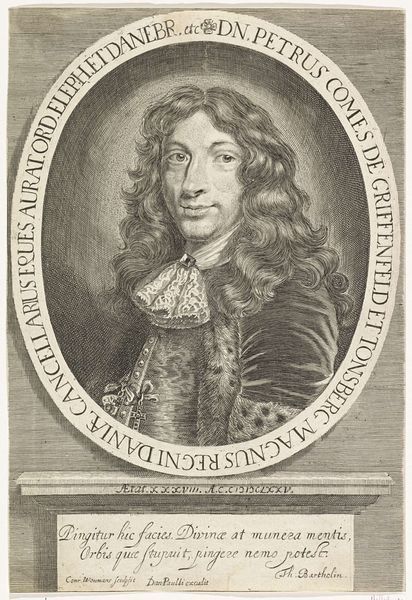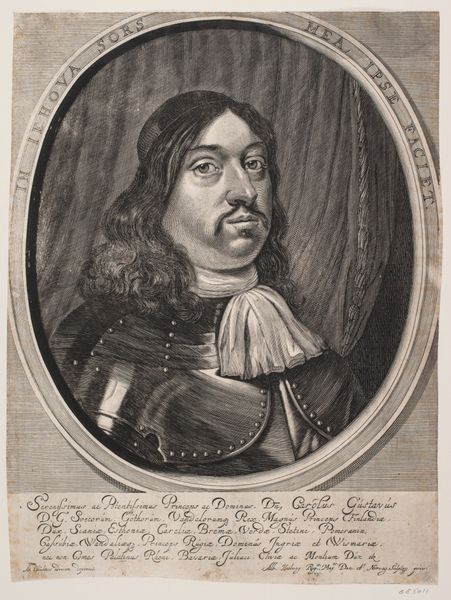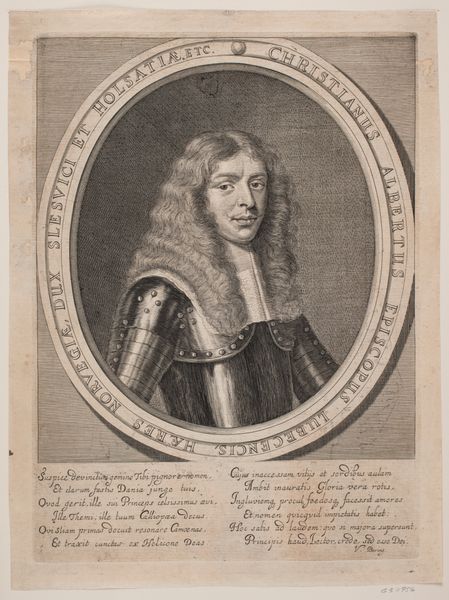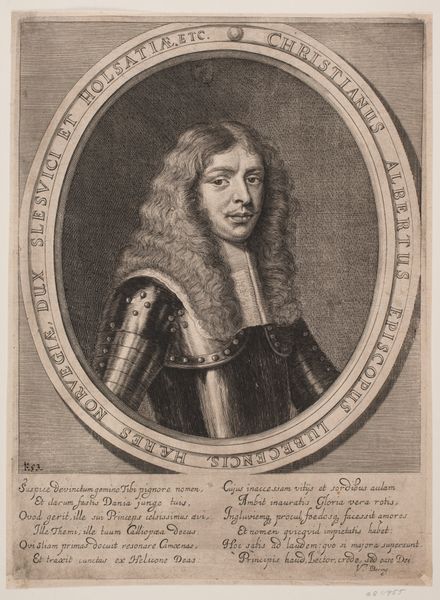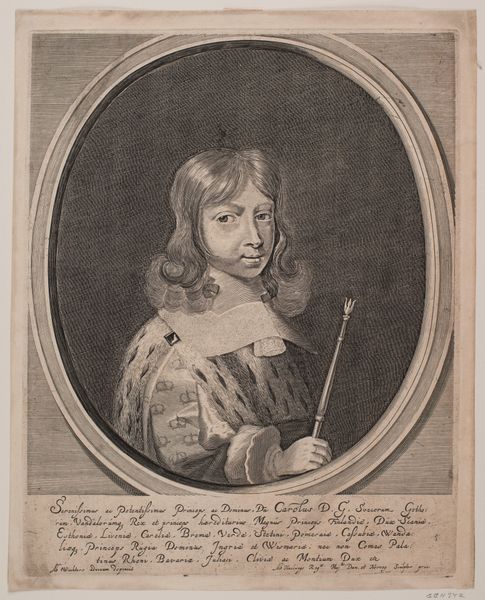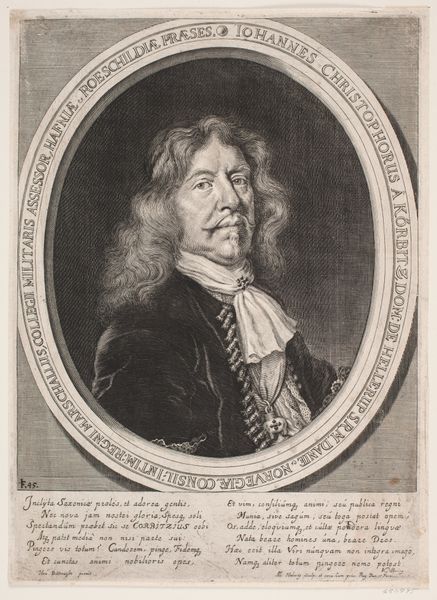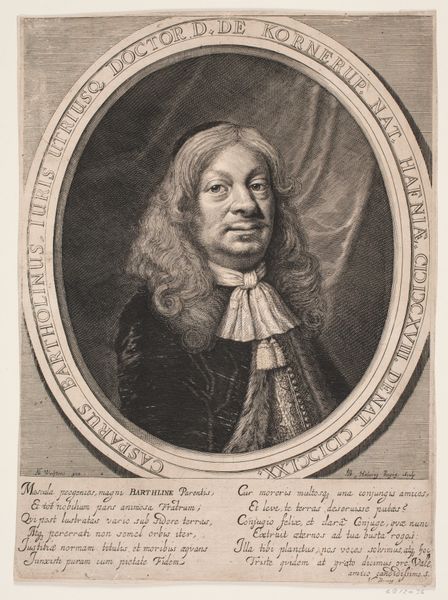
print, engraving
#
portrait
#
baroque
# print
#
history-painting
#
engraving
Dimensions: 355 mm (height) x 270 mm (width) (bladmaal)
Curator: I'm immediately struck by the contrast of the smooth skin and elaborate hair against the texture of the armor, all meticulously rendered through engraving. Editor: Indeed. What we have here is a portrait of Christian V as Crown Prince, dating back to 1667. It’s the work of Albert Haelwegh, rendered as an engraving, and it’s a fantastic example of Baroque portraiture aimed at bolstering the image of the monarchy. Curator: Engraving, for me, speaks to the meticulous labor involved. Every line etched into that plate represents hours of painstaking work. How were prints like this circulated and consumed at the time? Who was the intended audience? Editor: Exactly. Prints were crucial for disseminating images of power and nobility, reaching audiences far beyond the royal court. Think of them as the mass media of the 17th century – vital propaganda tools. This one would likely have been distributed to nobles, diplomats, and even the merchant class, reinforcing Christian's image as a just and pious ruler – as indicated by the inscription “Pietate et Justitia” within the oval framing the portrait. Curator: That inscription ties directly into the material properties. The permanency of the engraving process mirrored the desired permanency of the royal image. Was Haelwegh part of the royal apparatus, tasked specifically with this kind of image making? Editor: Haelwegh worked for the court, yes. His role underscores how art production was tied to political power. The distribution of prints, like this, reinforced a political system, normalizing its hierarchies. It solidified the lineage. Notice how his youth is emphasized, yet he is depicted in armor, the trappings of rulership weighing upon him. It conveys both inheritance and readiness. Curator: It also speaks volumes about the artist's skill in translating textures. To recreate the sheen of armor with just lines of varying thicknesses and densities...it really elevates the craft of printmaking. I also wonder how many different states of the print existed. Each slight variation tells us more about the artist's choices. Editor: It all highlights how image-making served political strategy back then. We’ve really seen today how it highlights the artist’s role within the dynamics of power, solidifying political authority and distributing potent imagery throughout society. Curator: Precisely. Looking closer at the material and the circumstances of production adds to its story in powerful and revealing ways.
Comments
No comments
Be the first to comment and join the conversation on the ultimate creative platform.
